
Freight and logistics provider Covenant Logistics (NASDAQ: CVLG) missed Wall Street’s revenue expectations in Q1 CY2025, with sales falling 3.4% year on year to $269.4 million. Its non-GAAP profit of $0.32 per share was 5% below analysts’ consensus estimates.
Is now the time to buy Covenant Logistics? Find out by accessing our full research report, it’s free.
Covenant Logistics (CVLG) Q1 CY2025 Highlights:
- Revenue: $269.4 million vs analyst estimates of $282.2 million (3.4% year-on-year decline, 4.5% miss)
- Adjusted EPS: $0.32 vs analyst expectations of $0.34 (5% miss)
- Adjusted EBITDA: $29.42 million vs analyst estimates of $33.49 million (10.9% margin, 12.1% miss)
- Operating Margin: 2.8%, up from 1.6% in the same quarter last year
- Market Capitalization: $496.8 million
Chairman and Chief Executive Officer, David R. Parker, commented: “Our first quarter earnings were $0.24 per diluted share or $0.32 per diluted share on a non-GAAP adjusted basis. The decrease in adjusted earnings per share compared with the first quarter of 2024 resulted primarily from sub-par equipment utilization due to prolonged inclement weather conditions and avian influenza outbreaks, which were especially severe this year. Overall, we remain confident in Covenant’s strategy, direction, and market position and our team’s ability to execute on the factors within our control. We enter the second quarter with modest rate increases secured in Expedited, higher margins in Managed Freight, and the expectation of revenue growth in our Dedicated, Managed Freight, and Warehousing divisions compared with the second quarter of 2024. We also recently completed a small tuck-in acquisition of a multi-stop distribution carrier that is expected to be immediately accretive to equipment utilization and earnings in our Dedicated division. In the current environment of uncertain demand, slow capacity exits, and escalating uncertainty regarding global trade policies, we continue to allocate capital to defensible niches, focus on cost control, and deliver superior service and value to customers. The new $50 million stock repurchase program announced today reaffirms our confidence in Covenant’s future."
Company Overview
Started with 25 trucks and 50 trailers, Covenant Logistics (NASDAQ: CVLG) is a provider of expedited long haul freight services, offering a range of logistics solutions.
Ground Transportation
The growth of e-commerce and global trade continues to drive demand for shipping services, especially last-mile delivery, presenting opportunities for ground transportation companies. The industry continues to invest in data, analytics, and autonomous fleets to optimize efficiency and find the most cost-effective routes. Despite the essential services this industry provides, ground transportation companies are still at the whim of economic cycles. Consumer spending, for example, can greatly impact the demand for these companies’ offerings while fuel costs can influence profit margins.
Sales Growth
Reviewing a company’s long-term sales performance reveals insights into its quality. Any business can put up a good quarter or two, but many enduring ones grow for years. Unfortunately, Covenant Logistics’s 5% annualized revenue growth over the last five years was tepid. This was below our standard for the industrials sector and is a tough starting point for our analysis.
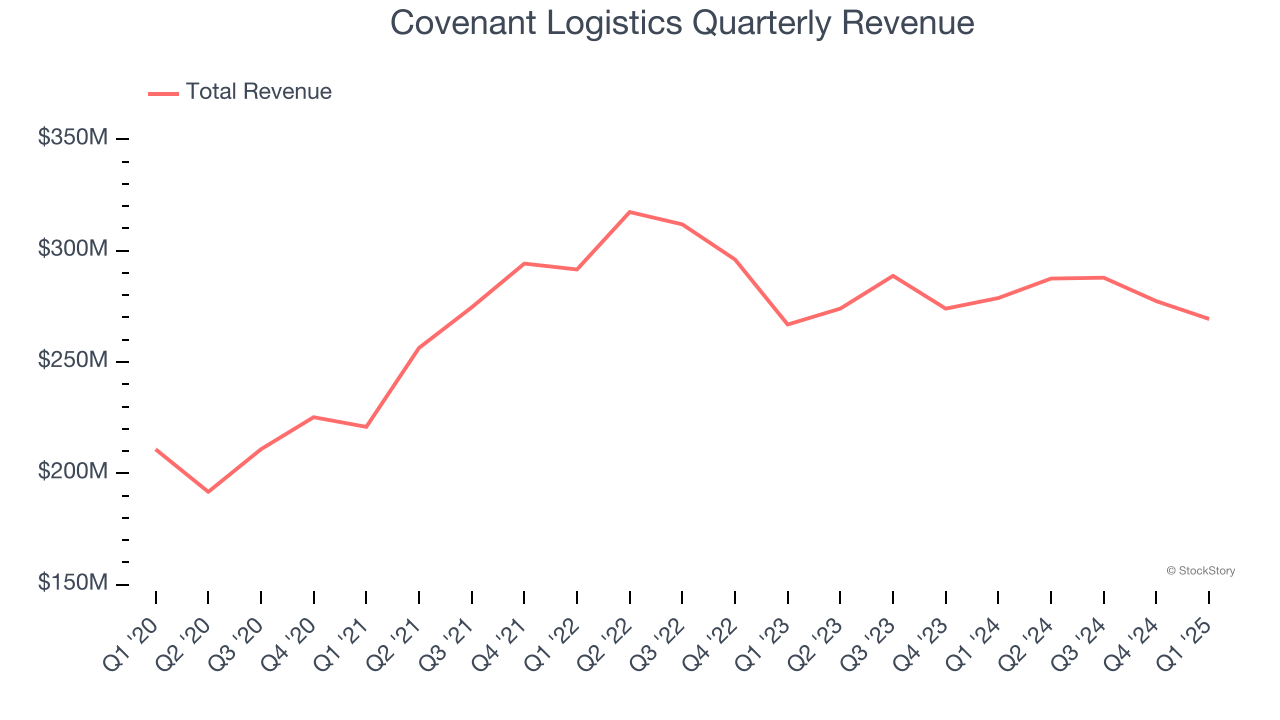
Long-term growth is the most important, but within industrials, a half-decade historical view may miss new industry trends or demand cycles. Covenant Logistics’s performance shows it grew in the past but relinquished its gains over the last two years, as its revenue fell by 3% annually. Covenant Logistics isn’t alone in its struggles as the Ground Transportation industry experienced a cyclical downturn, with many similar businesses observing lower sales at this time. 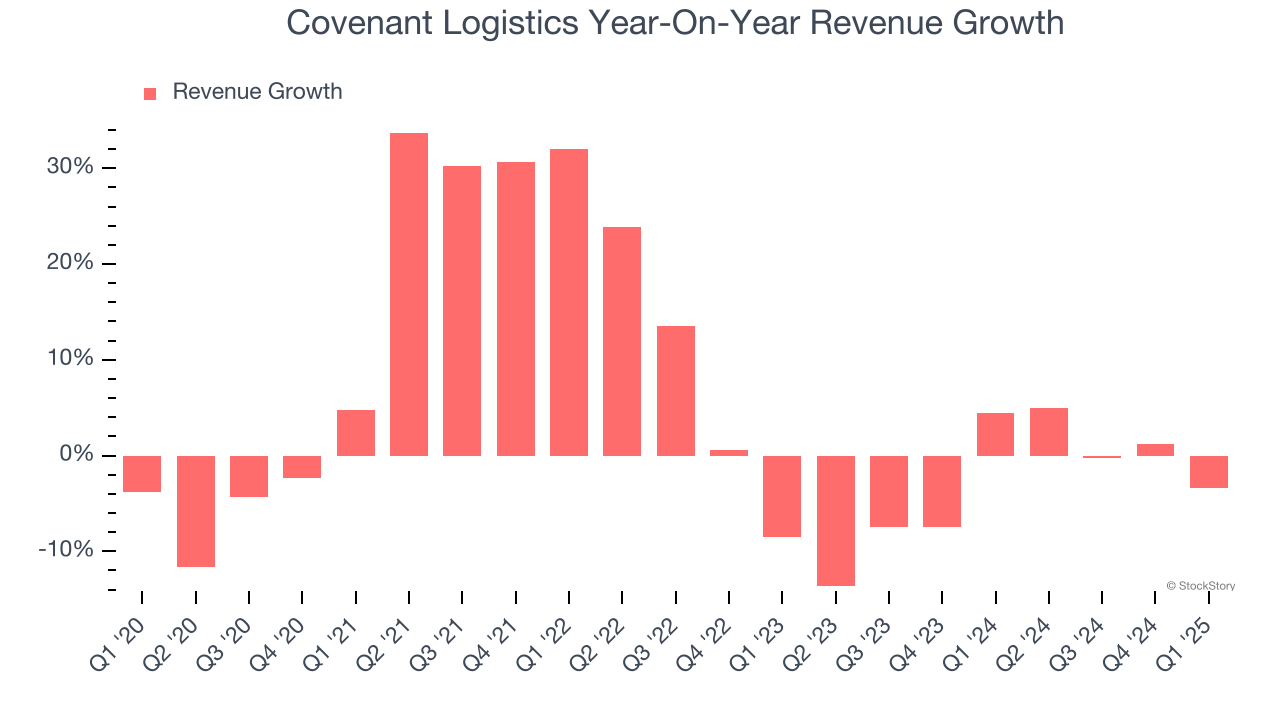
We can better understand the company’s revenue dynamics by analyzing its most important segment, Freight. Over the last two years, Covenant Logistics’s Freight revenue (moving cargo) was flat. This segment has outperformed its total sales during the same period, lifting the company’s performance.
This quarter, Covenant Logistics missed Wall Street’s estimates and reported a rather uninspiring 3.4% year-on-year revenue decline, generating $269.4 million of revenue.
Looking ahead, sell-side analysts expect revenue to grow 6% over the next 12 months. While this projection suggests its newer products and services will spur better top-line performance, it is still below the sector average.
Software is eating the world and there is virtually no industry left that has been untouched by it. That drives increasing demand for tools helping software developers do their jobs, whether it be monitoring critical cloud infrastructure, integrating audio and video functionality, or ensuring smooth content streaming. Click here to access a free report on our 3 favorite stocks to play this generational megatrend.
Operating Margin
Operating margin is an important measure of profitability as it shows the portion of revenue left after accounting for all core expenses – everything from the cost of goods sold to advertising and wages. It’s also useful for comparing profitability across companies with different levels of debt and tax rates because it excludes interest and taxes.
Covenant Logistics was profitable over the last five years but held back by its large cost base. Its average operating margin of 5.3% was weak for an industrials business. This result isn’t too surprising given its low gross margin as a starting point.
On the plus side, Covenant Logistics’s operating margin rose by 4.5 percentage points over the last five years, as its sales growth gave it operating leverage.
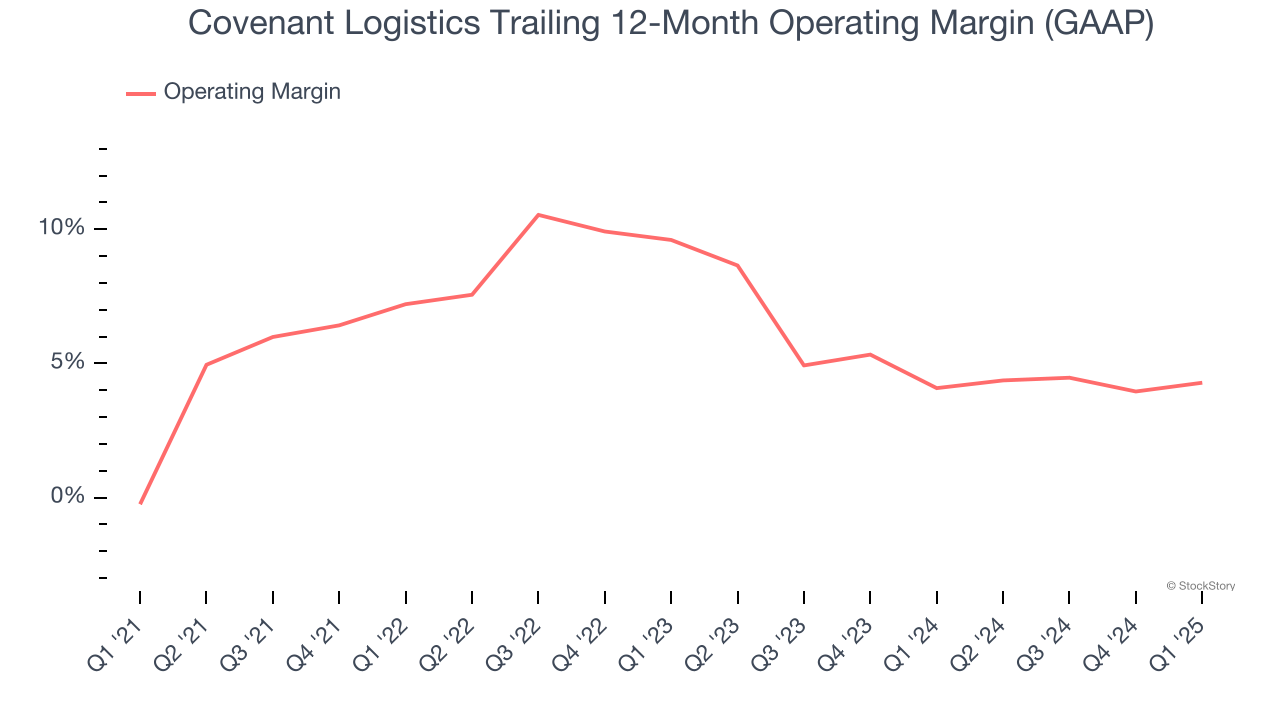
In Q1, Covenant Logistics generated an operating profit margin of 2.8%, up 1.3 percentage points year on year. The increase was encouraging, and because its operating margin rose more than its gross margin, we can infer it was more efficient with expenses such as marketing, R&D, and administrative overhead.
Earnings Per Share
Revenue trends explain a company’s historical growth, but the long-term change in earnings per share (EPS) points to the profitability of that growth – for example, a company could inflate its sales through excessive spending on advertising and promotions.
Covenant Logistics’s EPS grew at an astounding 77% compounded annual growth rate over the last five years, higher than its 5% annualized revenue growth. This tells us the company became more profitable on a per-share basis as it expanded.
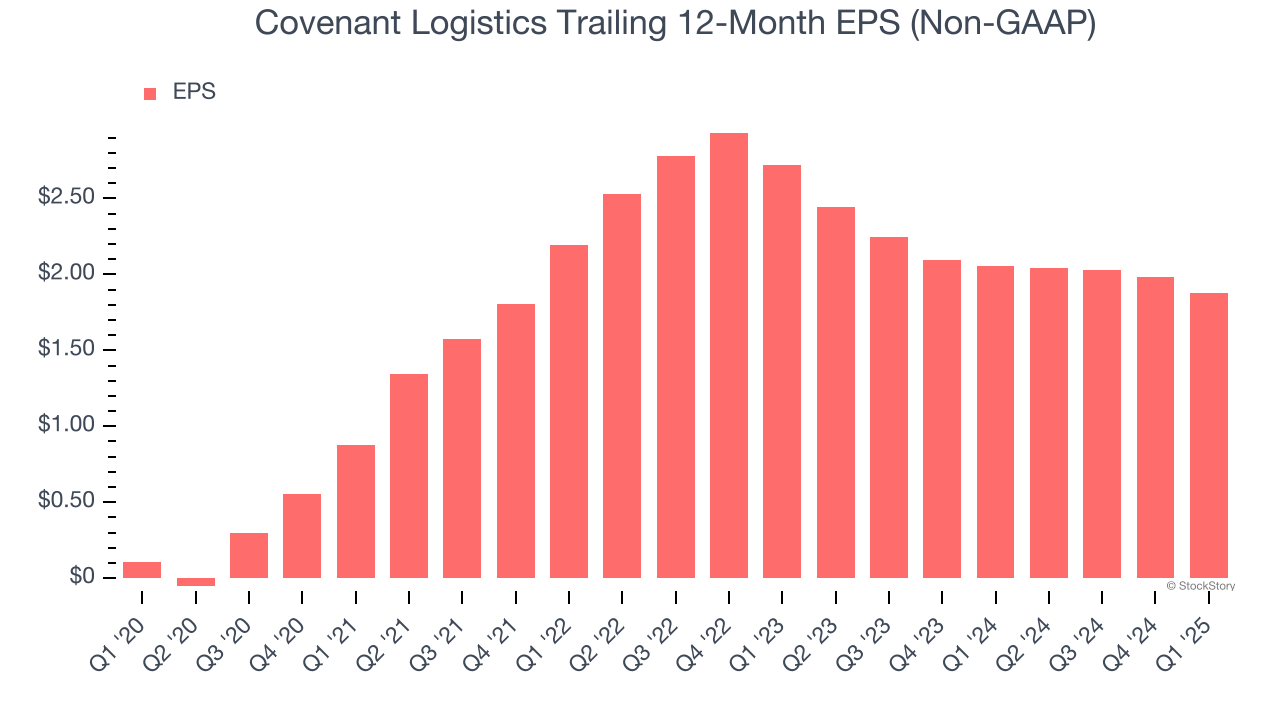
Diving into Covenant Logistics’s quality of earnings can give us a better understanding of its performance. As we mentioned earlier, Covenant Logistics’s operating margin expanded by 4.5 percentage points over the last five years. On top of that, its share count shrank by 22.9%. These are positive signs for shareholders because improving profitability and share buybacks turbocharge EPS growth relative to revenue growth. 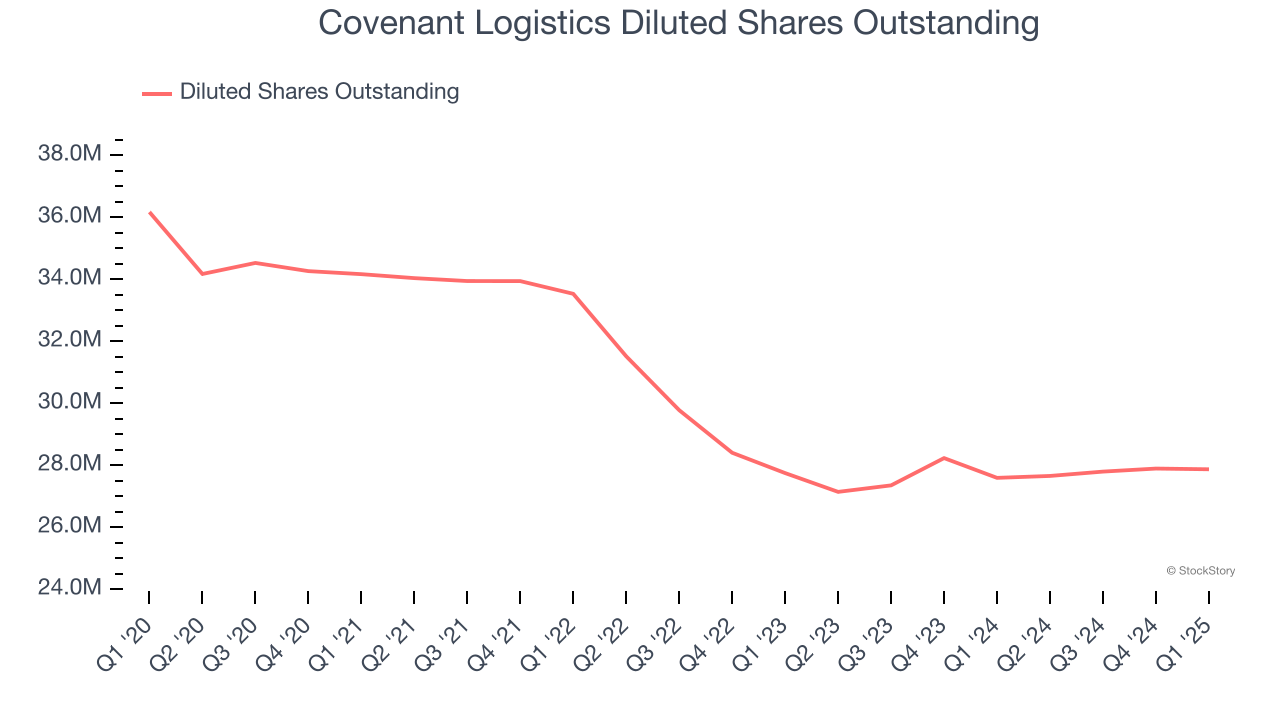
Like with revenue, we analyze EPS over a more recent period because it can provide insight into an emerging theme or development for the business.
For Covenant Logistics, its two-year annual EPS declines of 16.9% mark a reversal from its (seemingly) healthy five-year trend. We hope Covenant Logistics can return to earnings growth in the future.
In Q1, Covenant Logistics reported EPS at $0.32, down from $0.42 in the same quarter last year. This print missed analysts’ estimates, but we care more about long-term EPS growth than short-term movements. We also like to analyze expected EPS growth based on Wall Street analysts’ consensus projections, but there is insufficient data.
Key Takeaways from Covenant Logistics’s Q1 Results
We struggled to find many positives in these results as its revenue, EPS, and EBITDA fell short of Wall Street’s estimates. This was partly driven by underperformance in the Freight segment. Overall, this was a weaker quarter. The stock remained flat at $18.90 immediately after reporting.
So should you invest in Covenant Logistics right now? The latest quarter does matter, but not nearly as much as longer-term fundamentals and valuation, when deciding if the stock is a buy. We cover that in our actionable full research report which you can read here, it’s free.




